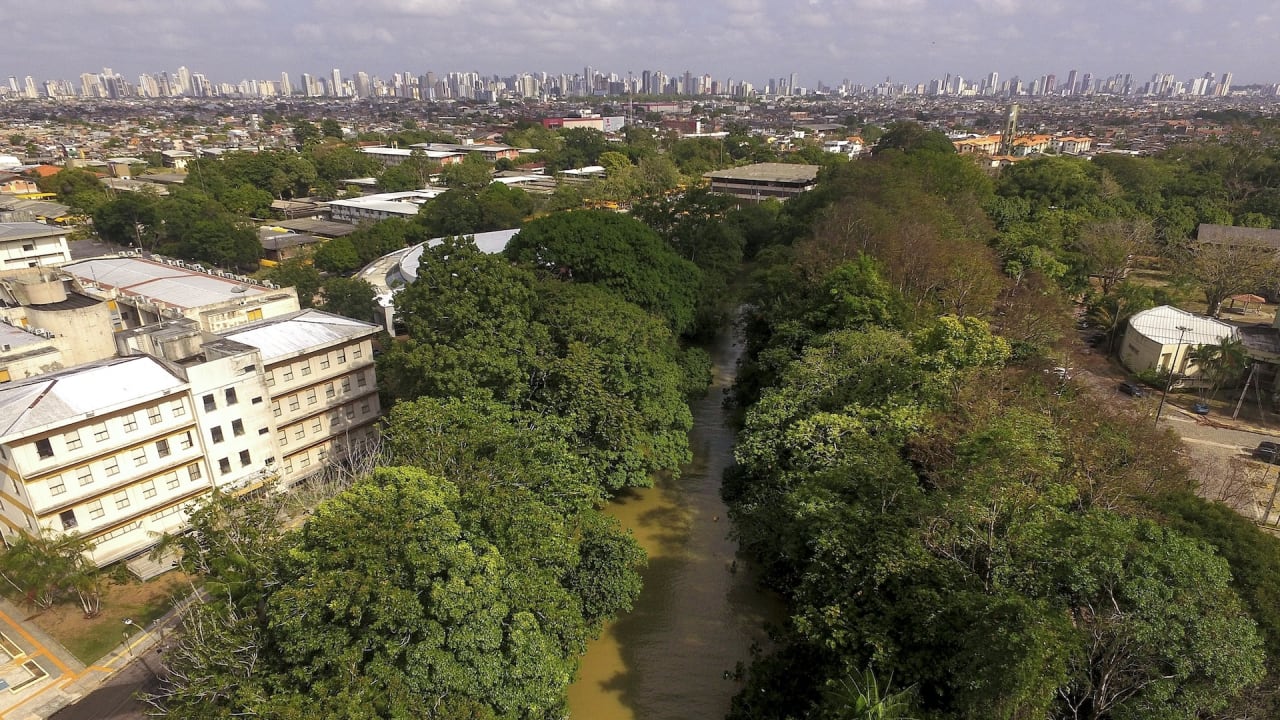
The UNs annual climate conference isnt for 9 monthsbut hotel rooms in the Brazilian city are $15K a night
www.fastcompany.com
Nine months ahead of this years annual U.N. climate summit, known as COP30, lodging prices in the Brazilian host city of Belem are turning headsand may soon turn off would-be attendees from the first such meeting in the Amazon rainforest.With a shortage of housing and high interest, property owners and rental companies are feeling emboldened to charge five-digit rates, even for cramped rooms with shared bathrooms.On Booking.com, one of the last available hotel rooms listed, a flat apartment, is going $15,266 for one person, up from $158 for the same category currentlya 9,562% increase. A 15-day stay during the conference in November would total $228,992, enough to buy a four-bedroom apartment in one of Belems top neighborhoods.On Airbnb, a room with a shared bathroom in Ananindeua, a poor city near Belem, is listed at $9,320 per day. A comparable room today could be rented for as little as $11 per day. In more upscale neighborhoods, renting an apartment that accommodates eight people costs up to $446,595 for a two-week stay.This one scared me, joked local architect and digital influencer Renato Balaguer about a dilapidated apartment listed at $10,000 for an 11-day stay.This is like putting gringos in captivity. False imprisonment is a crime! said Balaguer in a post that went viral.President Luiz Inacio Lula da Silva, who champions himself as a protector of the environment, has boasted about hosting the event in the Amazon, which helps regulate the climate by storing large quantities of carbon dioxide, a gas that causes climate change.This is also a landmark year in the annual process because countries must come forward with updated commitments to cut greenhouse gas emissions. Whats more, civic groups are particularly interested in attending because Brazil allows for protests and free expression, which are sharply restricted in the previous three host countries: Azerbaijan, the United Arab Emirates, and Egypt.Brazil, Latin Americas largest and most populous nation, has hosted other world events, such as the 2016 Olympics in Rio de Janeiro and the 2014 World Cup, with games played in Rio de Janeiro, Sao Paulo, Manaus, Belo Horizonte, and several other cities. Belem, an Atlantic port city that is on the edge of the Amazon rainforest, doesnt have the same infrastructure as other big cities, which has led to many questions about its ability to host COP30.Officials estimate that about 50,000 people will attend the summit, scheduled to take place Nov. 1021. Last year in Baku, Azerbaijan, the official tally was 54,148. Before that, in Dubai, attendance reached a record 83,884.Neither the federal government nor the Para state government responded to questions about the number of rooms currently available in Belem, a bustling and impoverished metropolis of 2.5 million people and the median income is $920 per month.Those who booked more than a year in advance secured lower prices, but many of those reservations have already been canceled without explanationa common practice in the hospitality business ahead of major events. Another issue is the increasing prices of accommodations already booked. One European nonprofit reserved a room for $2,000 in December, only to see the price rise to $7,200 two weeks later.Various groups that often attend the annual summit, including environmental nonprofits, activists, scientists, journalists, and businesses, are having to rethink whether they go as the prices rocket up.Planning for COP30 in Belem has been challenging due to limited and expensive accommodations, creating barriers for our participation, said Roberta Alves, deputy director of communications at Mercy Corps. The international humanitarian nonprofit has participated in several COPs, focusing its advocacy on financing a transition to green energy, adapting to climate change impacts, and how climate change exacerbates conflict.We are awaiting alternative options from the COP30 organizerscritical to ensuring that all voices, especially those from the frontlines of the climate crisis, are included in global conversations, Alves added.Owners and property managers offering rentals say the prices are a question of supply and demand, and besides, they also have high costs.Just the electricity and water for my house cost 5,000 Brazilian real ($860) per month, said Gisleno da Silva, who posted the ad for the Ananindeua room for $9,320 per day.At this price, I already have someone interested, he said, while adding he was open to negotiate.In the face of mounting criticism, the Brazilian government has said it will provide an additional 26,000 bed spaces. Those will include accommodations in docked cruise ships, public schools, new hotels, and military facilities. In a social media post published Friday, COP30 organizers said accredited participants would soon be able to book accommodations on an online platform.We have observed a disproportionate increase in rental prices, which we attribute to real estate speculation. This should stabilize as the government increases the availability of accommodations, Valter Correia, the special secretary for the event, said in the statement.Plenty of advocates are defending Belem, saying its challenges are minor compared to the significance of hosting the most important annual climate meeting in the worlds largest rainforest. In an article published in Valor Economico newspaper in December, environmentalist Priscilla Santos, cofounder of the Amazonians for Climate Network, said criticism of Belem not only reveals colonialist biases but also undermines an event that could be transformative for the region. Everyone wants to save the Amazon, but no one wants to discuss it in the territory?Meanwhile, worried about their reputation, some property managers are distancing themselves from the speculation. In an Instagram video that went viral, Fabrcio de Menezes compared the daily rental price of an apartment in Belem, charging $21,800 during COP, to the much lower rates of the iconic Jumeirah Burj Al Arab in Dubai, which markets itself as the worlds only seven-star hotel.I hope this is a joke by the owner, he said.Another local property manager, Carlos Netto, said he would never advise a property owner to charge such high prices.Do you think that gringos are clueless? Where in the world is a 20-day rental more expensive than the property? he posted.___The Associated Press climate and environmental coverage receives financial support from multiple private foundations. AP is solely responsible for all content. Find APsstandardsfor working with philanthropies, a list of supporters and funded coverage areas atAP.org.Fabiano Maisonnave, Associated Press
0 Comentários
·0 Compartilhamentos
·134 Visualizações











